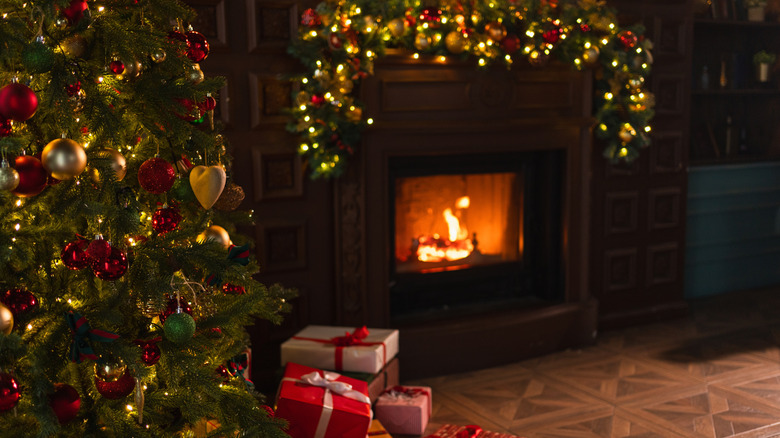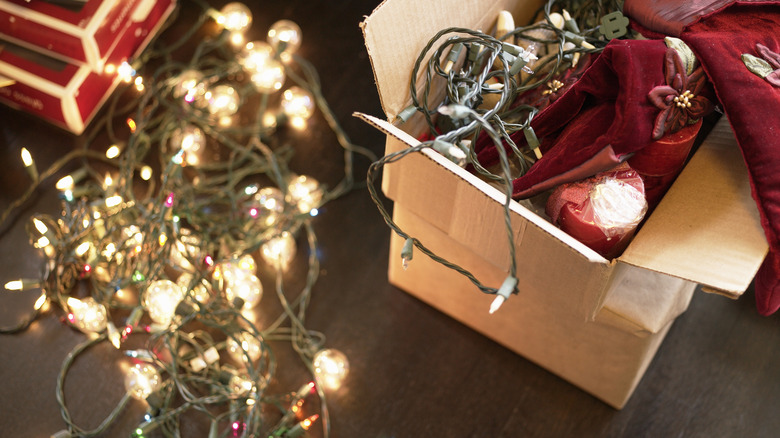Don't Let Cool-Toned LEDs Ruin Your Vintage Christmas: How To Spot The Difference Before You Buy
We may receive a commission on purchases made from links.
If you want a so-called "90s Christmas vibe," you're not alone. Social media users are embracing the nostalgia wave, complete with those classic, chunky lights draped around the house and on their trees. One thing that may quickly put a damper on your vintage Christmas, however, is getting the wrong lights for the look. White LED lights can pull off the cozy, magical glow you crave, but only if you get the right color temperature in terms of Kelvin (K) rating. The lower the rating, the warmer the color your bulb features.
The incandescent bulbs of your childhood holidays featured a warm, slightly yellow light, but also had a drawback: they could overheat. Incandescent bulbs produce 90% of their energy as heat, according to the U.S. Department of Energy. Thanks to their design using a heated filament, they also consume much more energy overall compared to LEDs, which have light-emitting diodes. Choosing LED lights for your Christmas is a better choice because they pose less fire risk, especially when strung on Christmas trees. Today's LED bulbs are safer, cooler to the touch, and last longer than traditional incandescent style lights. You can still usher that throwback look into your home, as long as you choose the right warm temperatures when buying Christmas lights to decorate this season.
Determining cool vs. warm tones in lighting, and why it matters
Every LED light strand has a color temperature according to where it falls on the Kelvin scale of measurement, which ranges from 1000K to 10000K. Paying attention to temperature, such as when choosing between soft white vs warm white, is important. Temperature corresponds to the appearance and feel of the light. Lights ranked 4000K or lower will give the best color warmth, and not the bright, sometimes harsh light you may associate with some LEDs. Any lights that fall on the Kelvin scale with a rating of 2000K to 3000K are referred to as "warm white" by lighting experts. As you inch further up the scale to 4500 and up, you have lights that are closer to daylight, which will definitely not represent an old-school holiday.
You may have all of your favorite nostalgic Christmas trends planned for this year, be it tinsel, homemade garland, or decorative villages, but if you cast them in the wrong light, it might just feel "off." Make sure your Christmas is merry, but maybe a bit warm rather than bright with a set of LED bulbs at the right color temperature. As you pick up lights at the store or browse online, pay attention to the labeling so that when you plug in that strand, it feels just like all of those Christmastimes long ago.

